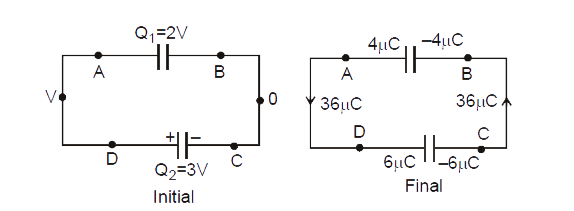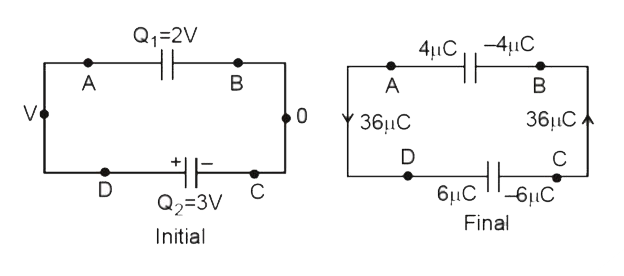Repeat above Question 3, if the charge is negative and the angle made by the boundary with the velocity is θ=π6.
cos−1(1√3)
sin−1(1√3)
π2−sin−1(1√3)
π2−cos−1(1√3)
The correct Answer is:a
Step by step video, text & image solution for Repeat above Question 3, if the charge is negative and the angle made by the boundary with the velocity is theta = pi/6. by Physics experts to help you in doubts & scoring excellent marks in Class 11 exams.
Updated on:21/07/2023Topper's Solved these Questions
- FORCE ANALYSISBOOK - ANURAG MISHRACHAPTER - FORCE ANALYSISEXERCISE - Level-2
73 Videos
- FORCE ANALYSISBOOK - ANURAG MISHRACHAPTER - FORCE ANALYSISEXERCISE - Level-3
49 Videos
- FORCE ANALYSISBOOK - ANURAG MISHRACHAPTER - FORCE ANALYSISEXERCISE - Example
95 Videos
- DESCRIPTION OF MOTIONBOOK - ANURAG MISHRACHAPTER - DESCRIPTION OF MOTIONEXERCISE - Level-3
34 Videos
- IMPULSE AND MOMENTUMBOOK - ANURAG MISHRACHAPTER - IMPULSE AND MOMENTUMEXERCISE - matching
3 Videos
Similar Questions
Knowledge Check
In above question, the charge flown is :
A2QBQC3QD3Q2In the above question, the velocity
Aincreases between points O and ABincreases between points A and BCdecreases between points A and BDis zero throughoutIn the above question, the angular velocity will:
AincreaseBdecreaseCnot changeDnothing can be said
What is the change in velocity in the above question?
View SolutionA line makes angles of measures π6 and π3 with X-and Z-axes respectively. Find the angle made by the line with the Y-axis.
View SolutionIf ˆaandˆb are two unit vectors and θ is the angle between them then vector 2ˆb+ˆa is a unit vector if (A) θ=π3 (B) θ=π6 (C) θ=π2 (D) θ=π
View SolutionIn the previous problem, the maximum range of movement of the centre of the part of the circle from line AD in which charged particle of charge Q moves with a velocity v when (θ) is positive to when (θ) is negative is given by
View SolutionA mirror is inclined at an angle of θ with the horizontal. If a ray light is incident at an angle θ as shown , then the angle made by reflected ray with the horizontal is
_E01_002_Q01.png)
View Solution


